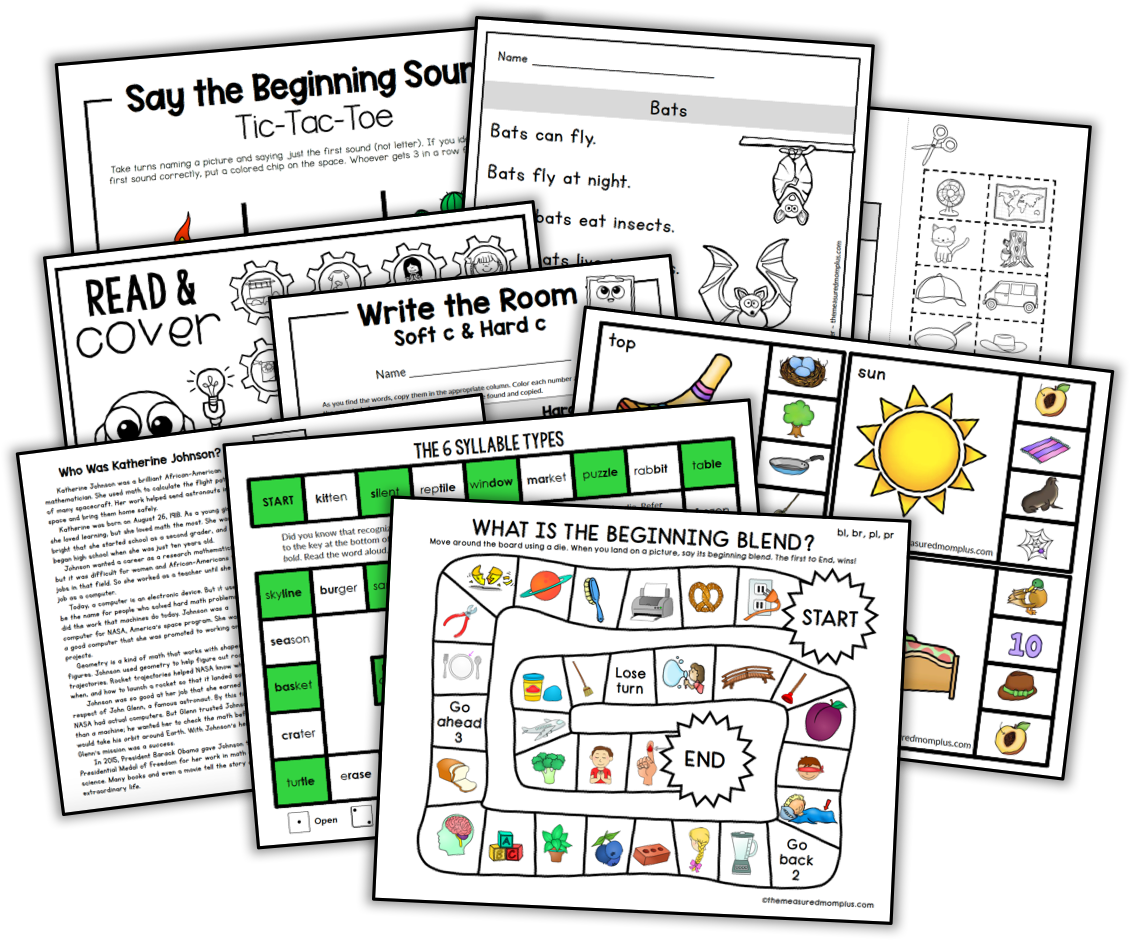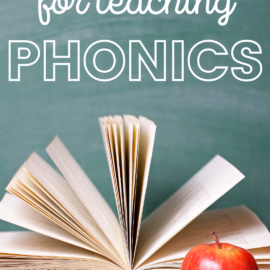Join me for a look at reading comprehension strategies that will help your child grow as a reader.

This Reading Mama and I teamed up to bring you another collaborative series! Together, we shared nine reading comprehension strategies to help your child learn and grow as a reader.
In this series you’ll find sample lessons, book lists, and other tools to bring these strategies to life.
What is reading comprehension?
The simple answer? It’s understanding what you’re reading. But if you’re teaching your child to read or a helping a struggling reader, you know that reading comprehension is anything but simple. It’s actually a combination of reading, thinking, and reasoning.
Signs that a child struggles with reading comprehension
- He doesn’t understand what the story was about.
- It takes him so long to read the story that he can’t remember what’s going on.
- He may focus so much on the details that he misses the main point.
- He can’t retell the story in a way that makes sense.
What is a reading comprehension strategy?
It’s a tool to help your child make sense of what he reads. Imagine that your washing machine stopped working. You call the repair man, and he arrives at the door ready to help. But he’s empty handed. He’s simply not equipped to do the job.
Think of reading comprehension strategies as tools in your child’s tool box. Equipped with these tools, your child will be able to make sense of new texts. Best of all, reading comprehension leads to a love of reading.
How should you teach these strategies?
- Describe the strategy.
- Model it.
- Assist your child as he uses it.
- Release your child to use the strategy independently.
And don’t worry – our series shows you exactly how to do this.
Check out each post for a free lesson and printable!
- Schema – Children active their own background knowledge.
- Making Connections – Children make personal connections to text using their schema
- Predicting – Students use their schema, along with words, pictures, and text features, to make predictions.
- Inferring – Students learn to read between the lines, making their best guess with context and picture clues.
- Visualizing– Students create mental images as they read poetry.
- Questioning – Students learn to create their own questions so they become active learners.
- Determining importance – Students figure out what’s important as they read fiction.
- Synthesizing – Students use their background knowledge and text clues to “put it all together” and make new meaning.
- Summarizing – Students put the story in their own words using important details from the book.

Have you seen our other collaborative series?
BUILD COMPREHENSION WITH OUR RESPONSE PACK!

$18.00
Help your readers find chapter books they’ll love with these leveled book lists. Then use the 75 reading response sheets to help them make sense of what they read. The response sheets focus on character, setting, plot, and vocabulary.





Maria
Hi! I am searching for a reading framework to teach reading in my homeschool. I love the idea of teaching with real books rather than a basal reader, but I’m wondering how to develop a structure and what content/mini-lessons I should teach throughout the year. My son is in third grade. I am wondering how you structure reading in your homeschool. Do you have suggestions for a framework/curriculum I could use? Thanks!
Kate Dowling
Hi Maria!
This is Kate, Anna’s assistant. Anna does not homeschool past preschool. Her students attend school beginning in kindergarten. This would be a great question on homeschool forums or facebook groups! 🙂
Afreen
Hello Anna-I believe there was a cheat sheet on your website with book suggestions for each comprehension strategy for k-2. Can you please post a link to that if you still have it somewhere on here. Thanks
Anna G
Hmm…. I think that’s on This Reading Mama’s website. 🙂
Amalia
I am an educator. I have taught 1st grade for 11 years. Teaching reading strategies is my favorite. Recently, I’ve decided to change up my approach (although it was working– I wanted to refresh and try something new). Your posts on the reading strategies have been great. I’ve been able to read through, feel inspired, and make it work for my group and my teaching style.
Thanks for sharing!
Anna G
Thank you for your comment, Amalia – I’m so glad these have been helpful!
lavanya
Hi Anna,
I really like the way you share the details of every aspect of teaching.I have a first grader at home and he is facing a little difficulty in this part of reading especially the connections. I am trying the ways to move ahead in comprehension strategies.I have a question, Do all the kids in general have the ability to understand this part when they are at first grade?
Thanks,
lavanya
Anna G
Hi Lavanya! I’d actually recommend that you check out this series about reading comprehension strategies. It’s for K-2.
https://www.themeasuredmom.com/how-to-teach-reading-strategies-with-picture-books/
Heather
Ongoing reading comprehension difficulties can also be a sign of a language disorder. Some kids have difficulty processing language. If in doubt, consult a speech-language pathologist who can fully evaluate language comprehension and use. (Just a friendly reminder from a speech-language pathologist who loves Anna’s resources!)
Anna G
Thanks for the reminder!
Lici
This post was extremely helpful. Thank you.
Anna G
You’re welcome, Lici!
Karen Trott
Good Night!
Do you guys offer a course on teaching math, problem solving, place value etc for K-2?
This will truly be beneficial as well.
Anna G
No – not at this time. it’s not currently in our plans, but my motto is never say never. 🙂
Susan Zohar-Noam
I like your reading comprehension book “If You Lived in Kenya”. Are there other books in that series?
Anna Geiger
Not yet, Susan, but stay tuned over the next two months. 🙂
Cheryl Lombard
Also loved the Kenya book!
Jas
Hello there,
Thanks for the post …i m mom of first grader but now got more confused after this post for where to start and which startegy to follow for which book. Do you have any book that guide us and give us set of questions for comprehension.
Anna Geiger
I don’t have a resource like that, Jas – but I will keep it in mind as a possible future project.
Viviana Taveras
This post was very helpful! thank you Anna!!!
Anna Geiger
You’re welcome, Viviana!
Janet
Is there a specific book to buy or it is just information available on-line.
thank you
Anna Geiger
This is not a book, but rather a series of blog posts. Click on each brown link to get loads of helpful information! Here are some published books you might find helpful: http://thisreadingmama.com/books-reading-comprehension-strategies/ (My favorite is 7 Keys to Reading Comprehension).
Holly B.
I love this series! Do you have a list of reading comprehension strategies that should be taught in upper elementary? Or maybe a great book to refer me to reading?
Anna Geiger
Great question, Holly! It would take some time for me to find that, so I’ll direct you to This Reading Mama’s post instead: http://thisreadingmama.com/comprehension/comprehension-strategies/
She has some recommended books at the bottom which are worth looking through. She was a reading specialist and is actually planning to write an ebook on reading comprehension strategies, so she is more the expert. I recommend commenting on that post with your question! Tell her I sent you. 🙂
Rosa
Great Job!!